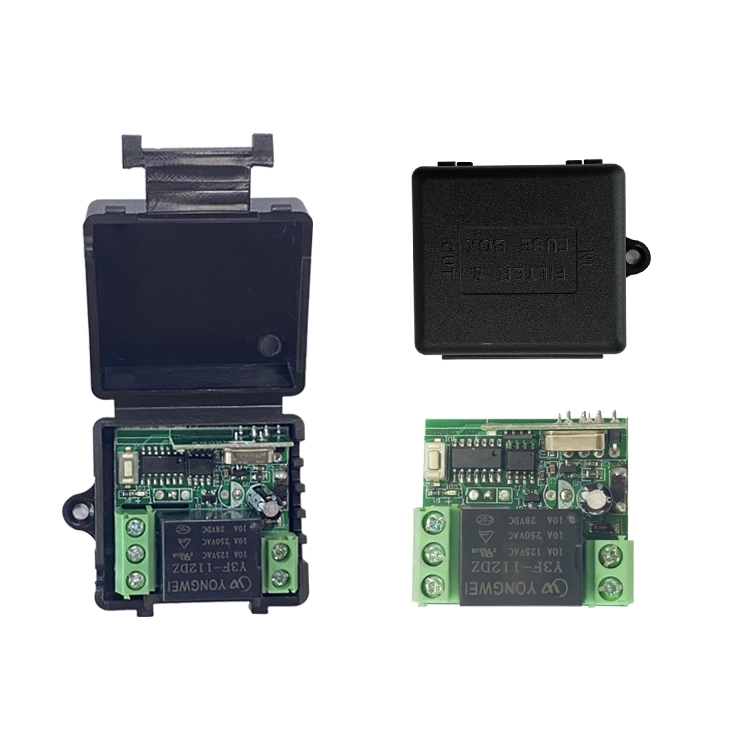- This topic is empty.
-
AuthorPosts
-
2025-06-22 at 10:29 pm #25338
In today's rapidly evolving home automation landscape, convenience, responsiveness, and intuitive design define the user experience. From lighting and HVAC systems to automated blinds and alarm integration, homeowners increasingly expect centralized, real-time control over their living environments. To meet these expectations, manufacturers and system integrators turn to technologies that combine operational flexibility with physical simplicity. Among these technologies, the wireless RF controller stands out as a powerful, efficient, and versatile device for real-time remote control. Unlike Wi-Fi or app-based systems that can be prone to connectivity loss or user complexity, the wireless RF controller relies on direct radio frequency (RF) communication, offering quick command execution without dependency on internet infrastructure. Its ability to work through walls and across rooms, support multi-zone control, and seamlessly pair with a wide variety of devices has made it a staple in modern smart homes.
What is a Wireless RF Controller?

A wireless RF controller is a device that sends radio signals to command and control other compatible electronic devices in a home automation system. Typically operating on ISM (Industrial, Scientific, and Medical) bands such as 315 MHz, 433 MHz, or 868 MHz, this controller transmits encoded signals that are received and interpreted by corresponding RF modules installed within lighting fixtures, curtain motors, garage doors, fans, or security systems.
Unlike infrared remotes that require line-of-sight or mobile apps that depend on internet access and app interface stability, wireless RF controllers operate independently of Wi-Fi networks, allowing for ultra-fast and reliable control with minimal delay. This makes them especially valuable for scenarios that require immediate response, such as triggering a panic alarm, shutting blinds at sunset, or toggling lights when entering a room.
Wireless RF controllers come in different physical formats, including handheld remotes, wall-mounted panels, and central hubs. They often feature programmable buttons that can be customized to control single devices or initiate complex, multi-device routines. Their simplicity in design does not compromise their performance,making them an optimal choice for both tech-savvy users and homeowners seeking minimalistic, dependable automation.
Applications of Wireless RF Controller in Home Automation
Lighting Control and Scene Management
Lighting remains one of the most frequently automated aspects of any smart home, and wireless RF controllers provide unmatched simplicity in managing it. With the press of a button, users can toggle on/off individual lights, activate grouped zones, or dim lights to specific brightness levels. High-end controllers also allow for storing and activating pre-set lighting "scenes" such as "Dinner Mode," "Movie Time," or "Night Reading," where multiple lighting zones adjust simultaneously. In homes with layered lighting — ceiling fixtures, wall sconces, LED strips — using a wireless RF controller eliminates the need to move between rooms or reach multiple wall switches. Moreover, scenes can be programmed to correspond with specific times of day or mood settings, enhancing ambiance and usability without requiring interaction with apps or voice assistants.
Curtain and Blind Automation
Motorized curtains and blinds are now common in modern homes, and a wireless RF controller is ideally suited for their operation. These systems typically have built-in RF receivers that respond to commands for opening, closing, or partial adjustments of window coverings. A single controller can operate all window treatments in a room or even across an entire floor. This functionality allows residents to instantly darken a home theater room, open east-facing blinds in the morning, or close all shades at night for privacy — all at the touch of a button. In advanced installations, wireless RF controllers can also work alongside daylight sensors to automate the process based on ambient light levels.
HVAC, Fans, and Temperature Management
Maintaining optimal indoor climate conditions is another domain where wireless RF controllers prove highly effective. With RF-based control modules, ceiling fans, air conditioners, and space heaters can be activated or adjusted remotely. Instead of relying on individual remotes or physically approaching wall units, users can control climate systems from any location in the house. Some systems allow users to set fan speed, oscillation modes, or temperature levels using predefined button settings. This is especially useful for families with members who prefer different room temperatures, allowing easy adjustment without altering the main thermostat configuration. When integrated with timers or occupancy sensors, the RF controller can also help optimize energy usage by turning off devices in unoccupied rooms.
Security and Access System Integration
Security applications benefit significantly from the robustness and reliability of wireless RF communication. Wireless RF controllers can be used to arm or disarm home alarm systems, open smart locks, trigger surveillance camera recording, or activate exterior motion lights. Since RF operates without reliance on cloud services or internet access, the system remains functional even during connectivity outages. Many security-focused RF controllers feature encrypted rolling-code transmission to prevent signal cloning or interception. This ensures secure communication between the controller and devices such as garage door openers or perimeter gates, enhancing peace of mind. Additionally, panic buttons integrated into the controller can be used to immediately alert authorities or trigger lockdown protocols in case of emergencies.
In conclusion, the wireless RF controller plays a central role in building a reliable, responsive, and user-friendly smart home ecosystem. Its superior range, signal penetration, real-time operation, and simplified control interface make it the ideal bridge between modern technology and daily living. Unlike cloud-dependent systems that require frequent updates or user apps, the wireless RF controller operates with speed, consistency, and intuitive ease — all while supporting critical home functions like lighting, HVAC, blinds, and security. For homeowners seeking an automation solution that works reliably, responds instantly, and integrates seamlessly into their lifestyle, the wireless RF controller remains one of the most practical and powerful tools available.
https://www.fuyuntechbest.com/Recevier-controller
http://www.fuyuntechbest.com
Dongguan Fuyun Electronic Technology Co., Ltd. -
AuthorPosts
- You must be logged in to reply to this topic.